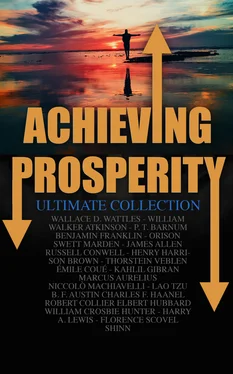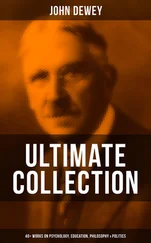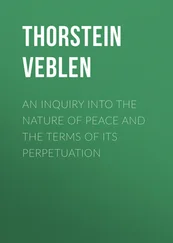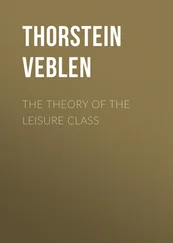“Each particular hair did stand on end,
Like quills upon the fretful porcupine?”
At all events, such was the effect, and it was impossible at first to supply the frantic demand, even of the city, not to mention the country readers.
I may very briefly sum up the outline of the discoveries alleged to have been made, in a few paragraphs, so as not to protract the suspense of my readers too long.
It was claimed that the “Edinburgh Journal” was indebted for its information to Doctor Andrew Grant—a savant of celebrity, who had, for very many years, been the scientific companion, first of the elder and subsequently of the younger Herschel, and had gone with the latter in September, 1834, to the Cape of Good Hope, whither he had been sent by the British Government, acting in conjunction with the Governments of France and Austria, to observe the transit of Mercury over the disc of the sun—an astronomical point of great importance to the lunar observations of longitude, and consequently to the navigation of the world. This transit was not calculated to occur before the 7th of November, 1835 (the year in which the hoax was printed;) but Sir John Herschel set out nearly a year in advance, for the purpose of thoroughly testing a new and stupendous telescope devised by himself under this peculiar inspiration, and infinitely surpassing anything of the kind ever before attempted by mortal man. It has been discovered by previous astronomers and among others, by Herschel’s illustrious father, that the sidereal object becomes dim in proportion as it is magnified, and that, beyond a certain limit, the magnifying power is consequently rendered almost useless. Thus, an impassable barrier seemed to lie in the way of future close observation, unless some means could be devised to illuminate the object to the eye. By intense research and the application of all recent improvements in optics, Sir John had succeeded in securing a beautiful and perfectly lighted image of the moon with a magnifying power that increased its apparent size in the heavens six thousand times. Dividing the distance of the moon from the earth, viz.: 240,000 miles, by six thousand, we we have forty miles as the distance at which she would then seem to be seen; and as the elder Herschel, with a magnifying power, only one thousand, had calculated that he could distinguish an object on the moon’s surface not more than 122 yards in diameter, it was clear that his son, with six times the power, could see an object there only twenty-two yards in diameter. But, for any further advance in power and light, the way seemed insuperably closed until a profound conversation with the great savant and optician, Sir David Brewster, led Herschel to suggest to the latter the idea of the readoption of the old fashioned telescopes, without tubes, which threw their images upon reflectors in a dark apartment, and then the illumination of these images by the intense hydro-oxygen light used in the ordinary illuminated microscope. At this suggestion, Brewster is represented by the veracious chronicler as leaping with enthusiasm from his chair, exclaiming in rapture to Herschel:
“Thou art the man!”
The suggestion, thus happily approved, was immediately acted upon, and a subscription, headed by that liberal patron of science, the Duke of Sussex, with £10,000, was backed by the reigning King of England with his royal word for any sum that might be needed to make up £70,000, the amount required. No time was lost; and, after one or two failures, in January 1833, the house of Hartley & Grant, at Dumbarton, succeeded in casting the huge object-glass of the new apparatus, measuring twenty-four feet (or six times that of the elder Herschel’s glass) in diameter; weighing 14,826 pounds, or nearly seven tons, after being polished, and possessing a magnifying power of 42,000 times!—a perfectly pure, spotless, achromatic lens, without a material bubble or flaw!
Of course, after so elaborate a description of so astounding a result as this, the “Edinburg Scientific Journal” ( i. e. , the writer in the “New York Sun”) could not avoid being equally precise in reference to subsequent details, and he proceeded to explain that Sir John Herschel and his amazing apparatus having been selected by the Board of Longitude to observe the transit of Mercury, the Cape of Good Hope was chosen because, upon the former expedition to Peru, acting in conjunction with one to Lapland, which was sent out for the same purpose in the eighteenth century, it had been noticed that the attraction of the mountainous regions deflected the plumb-line of the large instruments seven or eight seconds from the perpendicular, and, consequently, greatly impaired the enterprise. At the Cape, on the contrary, there was a magnificent table-land of vast expanse, where this difficulty could not occur. Accordingly, on the 4th of September, 1834, with a design to become perfectly familiar with the working of his new gigantic apparatus, and with the Southern Constellations, before the period of his observations of Mercury, Sir John Herschel sailed from London, accompanied by Doctor Grant (the supposed informant,) Lieutenant Drummond, of the Royal Engineers, F.R.A.S., and a large party of the best English workmen. On their arrival at the Cape, the apparatus was conveyed, in four days’ time, to the great elevated plain, thirty-five miles to the N.E. of Cape Town, on trains drawn by two relief-teams of oxen, eighteen to a team, the ascent aided by gangs of Dutch boors. For the details of the huge fabric in which the lens and its reflectors were set up, I must refer the curious reader to the pamphlet itself—not that the presence of the “Dutch boors” alarms me at all, since we have plenty of boors at home, and one gets used to them in the course of time, but because the elaborate scientific description of the structure would make most readers see “stars” in broad daylight before they get through.
I shall only go on to say that, by the 10th of January, everything was complete, even to the two pillars “one hundred and fifty feet high!” that sustained the lens. Operations then commenced forthwith, and so, too, did the “special wonder” of the readers. It is a matter of congratulation to mankind that the writer of the hoax, with an apology (Heaven save the mark!) spared us Herschel’s notes of “the Moon’s tropical, sidereal, and synodic revolutions,” and the “phenomena of the syzygies,” and proceeded at once to the pith of the subject. Here came in his grand stroke, informing the world of complete success in obtaining a distinct view of objects in the moon “fully equal to that which the unaided eye commands of terrestrial objects at the distance of a hundred yards, affirmatively settling the question whether the satellite be inhabited, and by what order of beings,” “firmly establishing a new theory of cometary phenomena,” etc., etc. This announcement alone was enough to take one’s breath away, but when the green marble shores of the Mare Nubium; the mountains shaped like pyramids, and of the purest and most dazzling crystalized, wine-colored amethyst, dotting green valleys skirted by “round-breasted hills;” summits of the purest vermilion fringed with arching cascades and buttresses of white marble glistening in the sun—when these began to be revealed, the delight of our Lunatics knew no bounds—and the whole town went moon-mad! But even these immense pictures were surpassed by the “lunatic” animals discovered. First came the “herds of brown quadrupeds” very like a—no! not a whale, but a bison, and “with a tail resembling that of the bos grunniens”—the reader probably understands what kind of a “bos” that is, if he’s apprenticed to a theatre in midsummer with musicians on a strike; then a creature, which the hoax-man naïvely declared “would be classed on earth as a monster”—I rather think it would!—“of a bluish lead color, about the size of a goat, with a head and a beard like him, and a single horn, slightly inclined forward from, the perpendicular”—it is clear that if this goat was cut down to a single horn, other people were not! I could not but fully appreciate the exquisite distinction accorded by the writer to the female of this lunar animal—for she, while deprived of horn and beard, he explicitly tells us, “had a much larger tail!” When the astronomers put their fingers on the beard of this “beautiful” little creature (on the reflector, mind you!) it would skip away in high dudgeon, which, considering that 240,000 miles intervened, was something to show its delicacy of feeling.
Читать дальше












